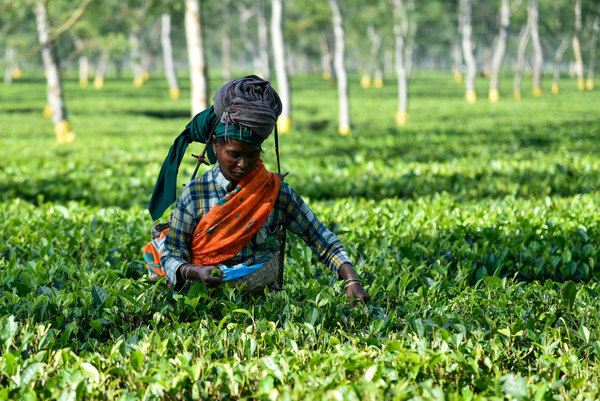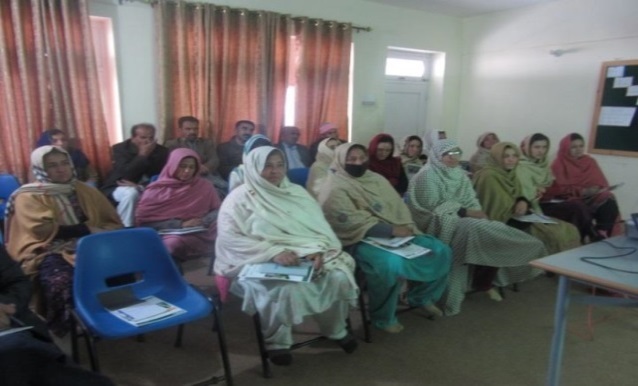Q&A: ‘I emigrated when my lab was turned into barracks’
SciDev.Net – the world’s leading source of reliable and authoritative news, views and analysis about science and technology for global development – is owned by CABI and highlights the role of women in science. On the eve of the UN International Day of Women and Girls in Science next month (11 February) we share this incredible…
CABI and IFDC join forces to get soybean film out to farmers in Northern Ghana
By Duncan Sones – from an article which originally appeared on the Africa Soil Health Consortium (ASHC) website Farmers in Northern Ghana are reaping the benefit of village-based film screenings to inform them about agricultural practices. Film screenings are growing in popularity amongst farmers and extension projects, as the technique for sharing information. This is…
Tuning into radio to dispel myths
By Amzath Fassassi – SciDev.Net’s regional coordinator for sub-Saharan Africa French, and the driving force behind Science et Développement. In Africa, many communities are still unaware of the key principles of science, whether they relate to diseases or natural phenomena. Until the beginning of the 1980s, in the slums of my native Benin, I remember that when lightning, hitherto considered…
The time is ripe for climate adaptation in agriculture
By Janny Vos, Director of Strategic Partnerships at CABI I recently attended the launch of the Global Commission on Adaptation (GCA) in The Hague where the words of the CEO of the World Bank – Kristalina Georgieva – resonated strongly with my work as part of an organisation that aims to improve people’s lives worldwide…
Fertilizer Optimization Tool helps return son to teacher training school
By Monica Kansiime, Scientist Seed Systems, based at CABI in Nairobi, Kenya In a previous blog post I outlined how the Fertilizer Optimization Tool (FOT) is paying dividends for farmers – helping them, in some cases, to report a seven-fold increase in their yields. Charles Wafula is a farmer and resident of Buhehe in Uganda who…
Empowering more women in the fight against fruit flies in Pakistan
More women in the Gilgit Baltistan (GB) region of Pakistan are benefiting from a Phytosanitary Risk Management Programme (PRMP) aimed at using a range of biological controls to fight the fruit fly pest which can impact heavily on rice and horticultural crops. PRMP, which is funded by USAID via United States Department of Agriculture (USDA), was initiated in…
Fertilizer Optimization Tool pays dividends for farmers in Uganda
By Dr Monica Kansiime, Scientist Seed Systems, based at CABI in Nairobi, Kenya A decision support tool that allows an extension agent to take into account a number of the farmers’ circumstances and investment goals to maximize the benefits of fertilizer use on their farms is starting to pay dividends in Molo Sub-County in Uganda – with…
Navigating ABS measures is ‘work in progress’
In this guest blog special, Dan Leskien, Senior Liaison Officer at the Food and Agriculture Organization of the United Nations (FAO), considers how much work still needs to be done to implement Access and Benefit Sharing (ABS) measures in respect of genetic resources… I wish to commend CABI for its initiative to prepare and implement…
One health – human, animal, environmental and plant health
Ahead of One Health Day tomorrow (3rd November 2018), Robert Taylor, CABI’s Editorial Director, explores the relationships between human, animal, environmental and plant health… The ‘One health’ initiative launched in 2007 was designed primarily to break down the barriers between human and veterinary medicine, particularly for dealing with zoonotic diseases. The link between BSE and…
‘Digging deep’ to strengthen the potato value chain in Pakistan
CABI in Pakistan, under its ACIAR-funded ‘Strengthening Vegetable Value Chain in Pakistan’ (SVVCP) project, is committed to improving the value chain of vegetables for smallholder farmers so they can improve their livelihoods. Dr Babar E. Bajwa, Project Leader, reports on the progress being made so far… Potato is a major crop in Pakistan with great…



